1000th DRIE module installed
In 1994, employees from Robert Bosch GmbH filed the original patent for a new anisotropic etch process for silicon, which came to be known as The Bosch Process or deep reactive ion etching (DRIE). This technology quickly became the fundamental building block in the development of MEMS technology. More recently, DRIE is also being applied to through-silicon via (TSV) technology for 3D-IC integration.
The Bosch DRIE process involves repeating cycles of 3 distinct steps, as shown below;
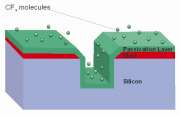 |
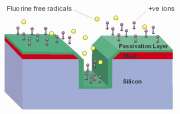 |
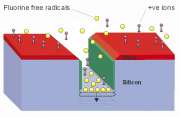 |
| (a) | (b) | (c) |
Fig 1 Schematic of DRIE Process (a) C4F8 plasma deposits passivating polymer on all surfaces (b) positive ions in SF6 plasma bombard horizontal surfaces removing polymer (c) Fluorine free radicals in SF6 plasma (isotropically) etch exposed silicon at the base of the feature, with the vertical sidewall protected by the polymer. Steps (a) to (c) are repeated on multiple cycles.
Due to the isotropic nature of the SF6 etch step, the process must be constantly switched between etch and passivation steps to maintain a vertical profile and minimize “scallops” which are characteristic of DRIE features. Desirable smooth sidewalls can be achieved by fast switching to reduce lateral etching within each cycle.
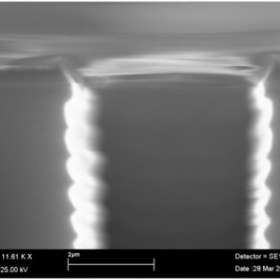 |
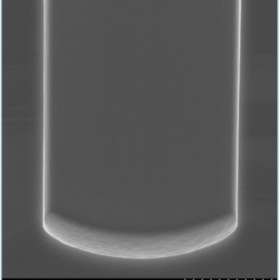 |
|
Fig 2 Magnified view of sidewall “scallops”
from non-optimised DRIE process.
|
Fig 3 Smooth sidewalls can be achieved with careful optimization of the DRIE process parameters |
SPTS was the original Bosch Process licensee in 1994, shipping the first commercial system in the following year. Since that time, we have continuously improved DRIE process capability. In current production environments, etch rates can exceed 30µm/min, aspect ratios exceeding 90:1, and device features of <50nm are commonplace. With this milestone, SPTS further extends its market-leading position as the premier supplier of DRIE processing systems to 28 out of 30 Top MEMS device manufacturers and the majority of packaging foundries.
In May 2013, SPTS celebrated a milestone, shipping its 1000th DRIE module.
